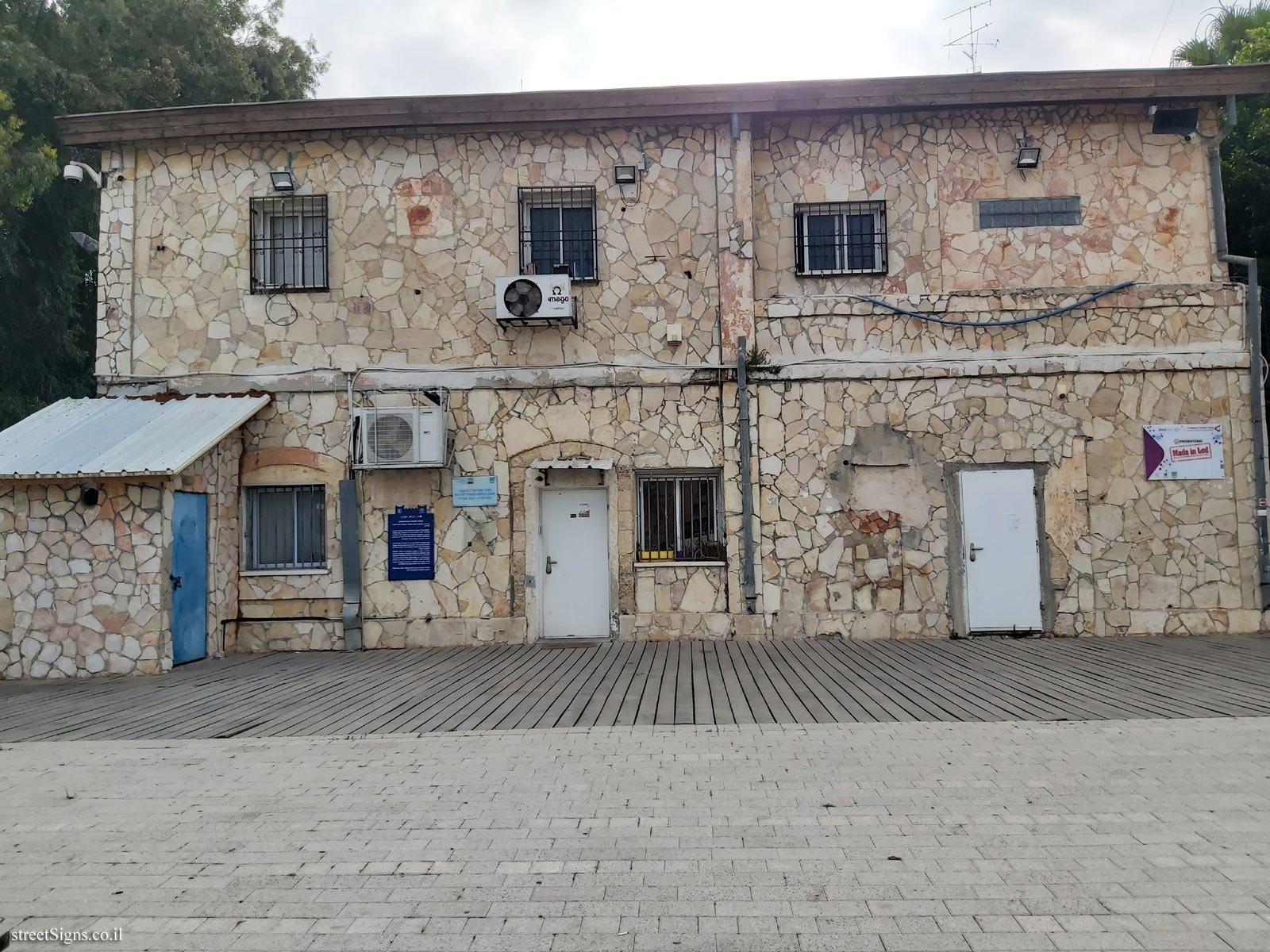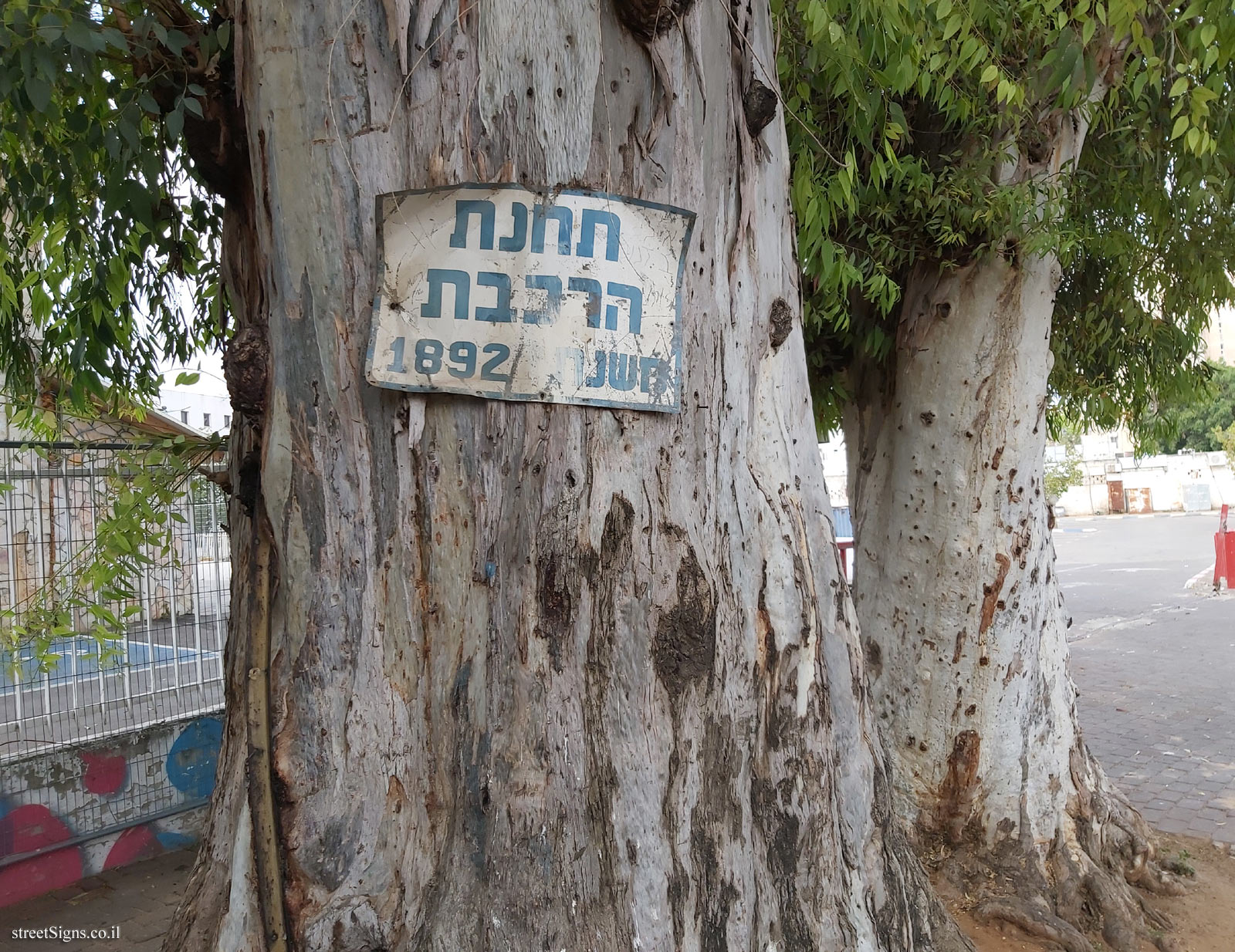The sign shape is square but its head is designed according to the silhouette of the old building of the Gymnasia Herzliya, which serves as a logo of the Council for the Preservation of Heritage Sites in Israel
The building was photographed that day
 Click for a larger image
Click for a larger image  Click for a larger image
Click for a larger image In front of the station, on a tree trunk, is an old sign that reads: The train station / 1892
 Click for a larger image Translation of the text on the sign
Click for a larger image Translation of the text on the sign:
Symbol of the Council for the Preservation of Israeli Heritage Sites
Lod city emblem
The emblem of the Ministry of Culture and Sport
"Tourism Revolution Logo"
The emblem of the Government Tourism Company
Ottoman train station In its original designation, this building served as a two-rail station.
A-Lid Station was built on a crosswalk that was inaugurated in September 1892 and connected between Jaffa and Jerusalem. With the operation of the train, the accessibility of Lod residents and the surrounding villages and its margins improved to the Jaffa-Jerusalem urban centers as well as to the settlements that were located along the tracks.
The Jaffa-Lod rail section was dismantled by the Turks during World War I to keep the railroad out of the British naval artillery range and to help pave the "long track".
The second track passed at this station was a "longitudinal track" paved by the Ottoman army as part of the war effort against the British during World War I (1915-1916).
This track connected north through the Valley Railroad to the Hijaz track paved in Jordan and connected Turkey with Saudi Arabia.
In the 1920s, the British, in the west of the city, built the new train station used today.

 Click for a larger image
Click for a larger image  Click for a larger image
Click for a larger image  Click for a larger image
Click for a larger image